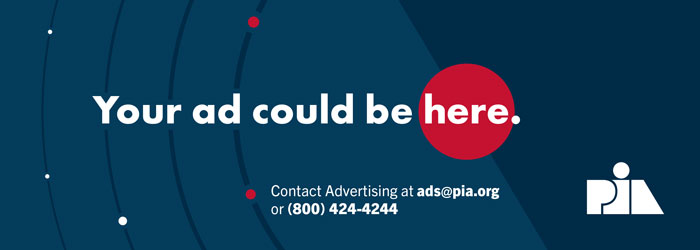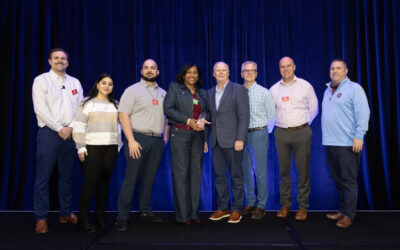As the world keeps changing, what does it take to reimagine what’s possible for your agency’s future—and make it happen? How can you do this not just once but repeatedly to stay relevant as the business environment evolves?
This question is on the minds of many agency principals in the Northeast. The insurance industry is facing unprecedented changes. These include new customer expectations, economic uncertainty, AI and other technologies, severe climate events, rising claims costs, changing legislation, new compliance requirements and more. All of these add up to create a complex new business environment that can feel like uncharted territory.
Leading your agency for growth is not only about adapting to the changes; it’s about being visionary and leading for transformational growth that can create unprecedented new value for employees, customers, partners and other key stakeholders and move your agency into a game-changing future.
For instance, one visionary professional insurance agent I spoke with is leading to create what he calls “a seamless customer experience.” He and his agency are balancing traditional approaches with leveraging a variety of technologies and digital communication channels. This not only enables him to discover new opportunities; it also strengthens his personal touch with customers in the fast-paced environment.
Other future-focused professional insurance agents are creating new business models through mergers and acquisitions and partnerships, which enable them to extend their reach to different consumer demographics and offer additional services, such as financial planning, warranty services and more.
While these are exciting possibilities, transformational growth like this also can bring many leadership challenges. Multiple studies across industries show that only a quarter to one-third of business transformations in established businesses live up to everyone’s expectations.
Even the savviest leaders have shared with me that there can be a gap between their aspirational vision and mission and the reality of the sometimes strange responses that others can have to transformational growth. Often, these responses include persistent conflicts across the business, sagging morale and productivity, and stubborn attachment to the current way of conducting business that can leave an agency circling in what I call an “orbit of the status quo”—that is, busy with today’s activities but not innovating and transforming to stay responsive and create new value. This can put your business at high risk of disruption as the world keeps changing.
The good news is that there is a way to break orbit. The secret is balancing the visionary, strategic side of transformational growth with emotionally engaging employees and other stakeholders so they want to join you in bringing the bold vision to life. This may seem obvious, but when you’re moving into the unknown, it can be natural to encounter a mysterious tangle of knotty human dynamics that can disrupt even the most compelling vision and growth strategy.
Demystify the tangle of knotty dynamics
Bringing a bold transformational vision to life in the face of complexity and uncertainty can naturally create paradoxical dynamics in your agency’s culture—even in the smallest businesses.
On one side of the paradox is the carefully shaped, aspirational formal culture. It includes written vision and values statements, and strategy and business plans. These inform objectives, goals, metrics and key performance indicators that promise substantial rewards. On the other side of the paradox is the informal culture, based in neuroscience. This is the emotional side of what people really value and believe and how they really behave.
When formal and informal cultures support each other, the forward movement can be powerful. However, when informal culture takes on a life of its own that is distinctly different from formal culture, there can be significant tension between the expected outcomes and what happens over time.
Even the savviest leaders can focus on leading according to the strategy and goals of the formal culture while the dynamics of the emotional informal culture remain hidden. This can result in a knot of twisted dynamics that can keep your business mysteriously circling in orbit—even when everyone says they need to transform and grow.
At the core of these knotty dynamics are three distinct leadership challenges. They can emerge together in any organization experiencing the complexity and uncertainty of transformational growth:
- facing open and hidden pushback to a bold vision for the future;
- moving beyond consensus to commitment for a vision clouded with uncertainty; and
- accelerating and sustaining momentum for transformational growth in the midst of complexity.
Collectively, these challenges call on leaders and teams to increase trust and openness with each other substantially. This can be especially uncomfortable as financial rewards and careers are at stake.
To lead through these dynamics, I’ve identified three leadership paradoxes associated with transformational growth. I call them the Three Growth Igniters® Paradoxes. The more aware you become of these paradoxes and embrace them, the more quickly you can untangle the knots, turn dynamics into opportunities, and break orbit for game-changing growth.
Break orbit
While the Three Growth Igniters Paradoxes can emerge together as you’re leading your agency into the complexity and uncertainty of creating new value, for clarity, I’ll talk about them separately.
No. 1: The Visionary Paradox™️: The bolder the vision, the stronger the pushback. One of the most visible paradoxes in the knot can be pushback to a bold vision from employees, partners, customers and other stakeholders. Why? Visionaries come to their big ideas from a personal space filled with their values, biases, knowledge and experiences. However, there may be a mismatch when they try to engage other stakeholders who have their own personal biases, values, knowledge and experiences.
This is what can set up a paradoxical dynamic: the same vision that can inspire some people to think about the possibilities of creating new value also can create a perception of threat in others who don’t understand the vision or don’t agree with moving in a transformational direction for a variety of strategic, executional, and/or personal reasons.
Here’s a question to consider before committing to a transformation: What are the perspectives of everyone involved regarding the changes you’re considering? Under pressure, it can be natural to override people who push back as naysayers and move forward anyway. But this can come at a cost.
When you’re in uncharted territory in which there are no set answers, everyone’s perspectives can be helpful—even those that are contradictory. Neuroscientist Michael Platt calls this “perspective taking.” When you can stay open to others’ perspectives—and the thinking and emotions behind them—you can increase trust and discover insights about opportunities that can be surprisingly valuable.
The bottom line: Embrace the Visionary Paradox. Welcoming disagreement as much as you welcome agreement can open a whole new range of options for moving forward when there’s no clear path for the way ahead.
No. 2: The Success Paradox™️: The greater the push to new success, the stronger the pull of the status quo. More difficult to detect is the leadership challenge of gaining genuine commitment to a specific option for moving forward, filled with uncertainty. This is when you can find the Success Paradox. Even the most compelling narrative about a vision explaining how it fits with the agency’s purpose may not win over stakeholders emotionally. The risk is generating consensus that may not hold up during implementation.
Moving in a new direction can naturally compete with the comfort of the established vision, strategy and culture. On top of this, some people may struggle to see how their individual roles fit with the new direction, or they may be reluctant to abandon practices that have historically delivered results. These emotions can undermine the genuine commitment it takes to break orbit for transformation.
While no one may share their concerns about committing to the new vision openly, their resistance often is hidden in endless debates about data that just go round and round with no decision. Tempers may flair, or people may just shut down and agree with the new direction with their words, but not in their actions. This can result in poor morale, losing key talent and losing customers as persistent problems build up.
One answer to this standoff comes from neuroscientist Tali Sharot. She says that when you’re focused on persuading others, over-relying upon facts and figures can cause people to dig further into their established positions. Overcoming this stand-off hinges upon finding common emotional ground upon which to build.
For example, before making decisions about a technology transformation, consider the following question: What are the wishes of everyone involved regarding their own productivity and experience of your agency? Often, these wishes are hidden because people can become used to traditional ways and habits of doing business.
When everyone desires the same outcome—each for their own reasons—it can make all the difference between consensus and genuine commitment to the new shared vision.
The bottom line: Embrace the Success Paradox: While rational thought and data are critical for shaping strategy, the heart of commitment that enables people to step out of their comfort zones and break orbit comes from emotion.
No. 3: The Momentum Paradox™️: The organization that accelerates momentum creates friction. One of the most confounding challenges of transformation can emerge even when a team jointly commits to a new vision. Resistance—both open and hidden—can hinder progress. This is when to look for The Momentum Paradox. New priorities and accountabilities in the formal culture can create tension and friction in the informal culture that can slow momentum down just when you need it to speed up.
Entering new markets, creating new services, developing individuals and teams, selecting and learning new technology, establishing new policies, and creating new ways of building customer relationships can all lead to confusion, conflicts and frustration.
This is especially true when sensitive issues exist that are likely to impact people’s jobs and finances (e.g., M&A). Be sure to look for hidden dynamics including, elephants in the room. These are the conflicts everyone knows about, but no one wants to discuss.
Under these conditions, it’s vital to foster an environment in which people feel safe to raise difficult issues they’re encountering. Business professor Amy Edmondson calls this “creating an environment of psychological safety.” When people feel they can speak openly without fear of penalty, it can be much faster to resolve conflicts and discover opportunities that create value for everyone.
The bottom line: Embrace the Momentum Paradox by fostering an environment in which people feel safe raising difficult issues. This can increase the collaboration and innovation that it takes to accelerate and sustain momentum for transformational growth dramatically.
Lead transformation for short-term, long-term growth
As the world continues to change, leading your independent insurance agency to stay relevant now and into the future is more than about adapting to change—it’s also about transforming for the future.
In the face of complexity and uncertainty, expect the tangle of knotty issues that can come from the tension between formal and informal culture. Be especially alert for signs of hidden dynamics. Bringing these out into the open as quickly as possible is the key to turning them into opportunities.
The more aware you are of the Three Growth Igniters Paradoxes and the leadership challenges associated with them, the faster you can untangle the knot, break orbit and ignite game-changing growth.
When you can keep doing this, you’re leading for more than short-term wins; you’re leading for transformational growth that can enable your agency to stay relevant, regardless of the twists and turns ahead.
This article originally appeared in the April 2025 issue of PIA Magazine.

Pamela Harper
Pamela S. Harper is a keynote speaker, author, and founding partner/CEO of Business Advancement Inc., a strategic growth advisory firm based in the New York City metro area. She is co-host of the award-winning podcast Growth Igniters® Radio. You can find more information at https://businessadvance.com.





